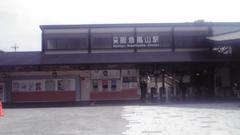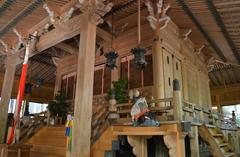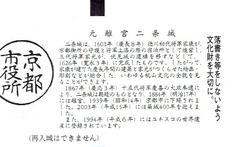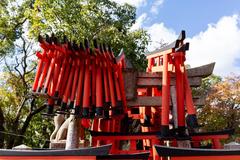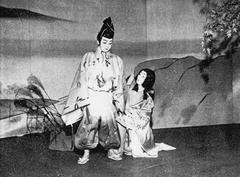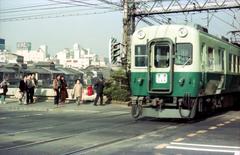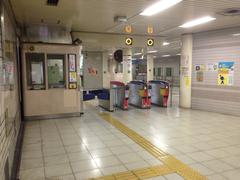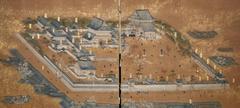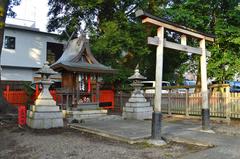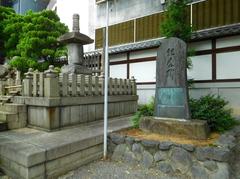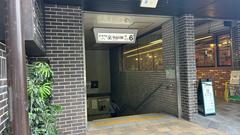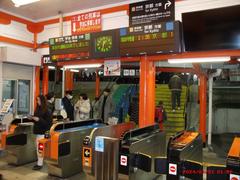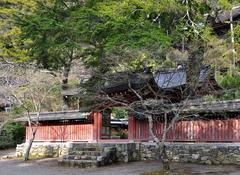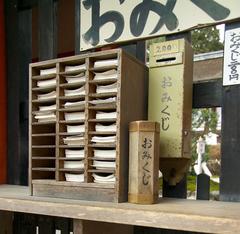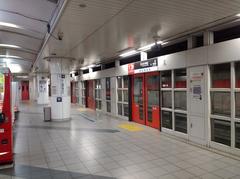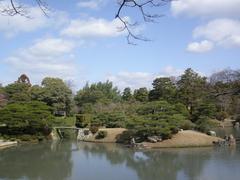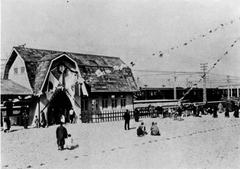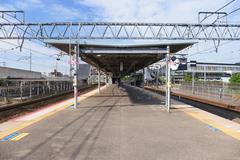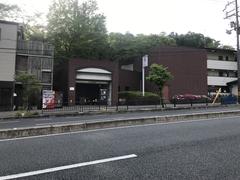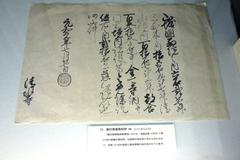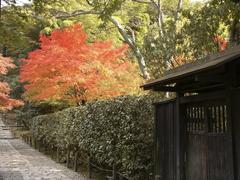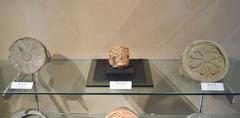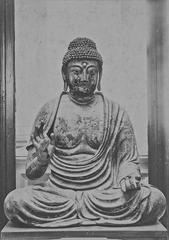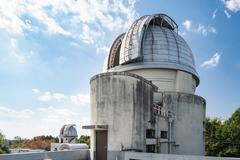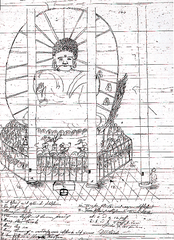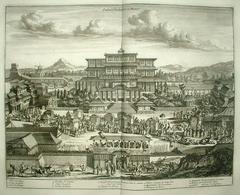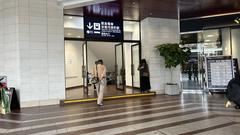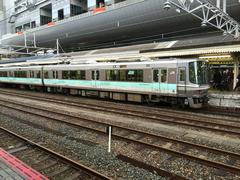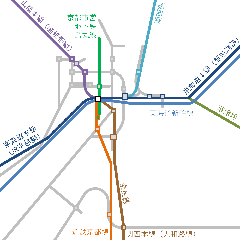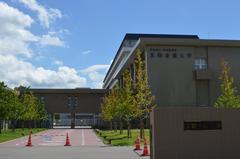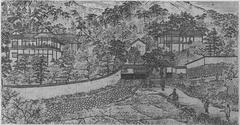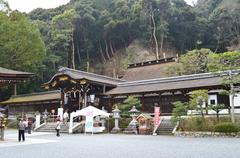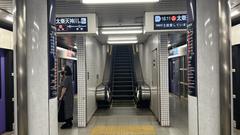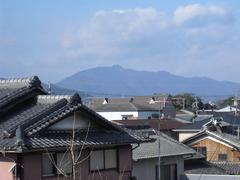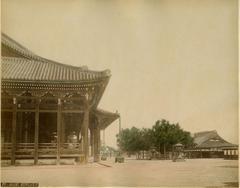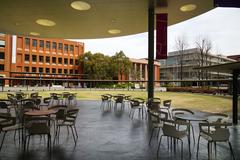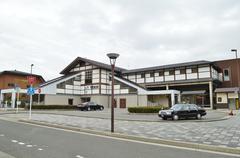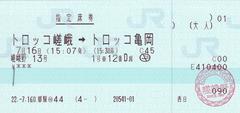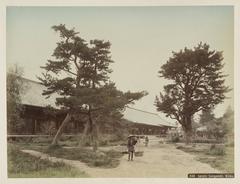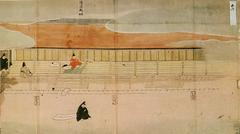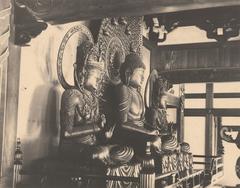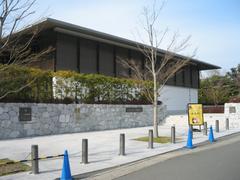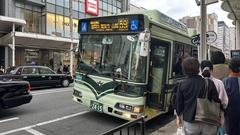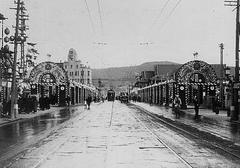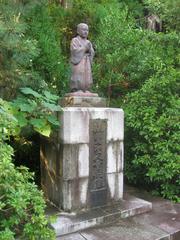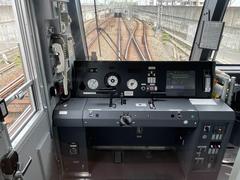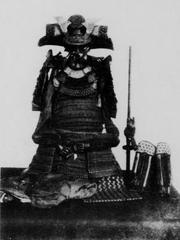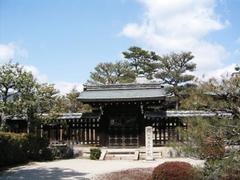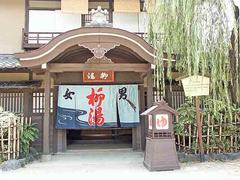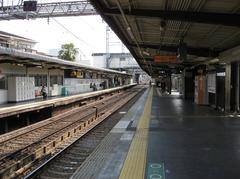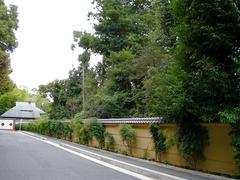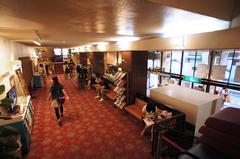
Ishida Station Kyoto: Visiting Hours, Tickets, and Travel Guide
Date: 04/07/2025
Introduction: Ishida Station’s Role in Kyoto
Situated in the culturally rich Fushimi Ward, Ishida Station is a key entry point for exploring both the vibrant local life and the historic treasures of southern Kyoto. Since joining the Kyoto Municipal Subway’s Tōzai Line in 1997, the station has connected residential neighborhoods with central Kyoto and major cultural sites, exemplifying Kyoto’s blend of heritage preservation and modern urban transit. Operating from early morning until late at night, the station offers convenient ticketing—including single fares, one-day passes, and support for IC cards such as ICOCA and Suica—making city travel seamless for locals and visitors alike (Kyoto Municipal Subway – MetroEasy, Kyoto Travel Guide).
Beyond its transit function, Ishida Station is embedded in a neighborhood featuring traditional machiya townhouses, family-run eateries, and proximity to famed attractions like Daigo-ji Temple (a UNESCO World Heritage Site) and Fushimi Inari Taisha Shrine. The nearby Fushimi sake district further enriches the visitor experience with historic breweries and sake tastings.
Accessibility is prioritized at Ishida Station, which features elevators, ramps, and barrier-free facilities. The station’s integration with Kyoto’s transit network enables easy connections to key destinations and supports local initiatives in sustainable urban development and community revitalization.
Contents Overview
- Introduction
- Kyoto’s Urban Evolution and Ishida Station
- Visiting Ishida Station: Hours, Tickets & Accessibility
- Exploring the Neighborhood & Key Attractions
- Historical Context of Fushimi and Ishida Station
- Urban Development and Preservation
- Ishida Station’s Role in Kyoto’s Transit Network
- Community Impact
- Travel Tips
- Nearby Historical Sites: Visiting Hours & Tickets
- Guided Tours, Accessibility, and Local Experiences
- Practical Visitor Tips
- FAQ
- Conclusion & Call to Action
- Sources
Kyoto’s Urban Evolution and Ishida Station
Kyoto, Japan’s imperial capital for over a millennium, is characterized by a unique grid layout originating in 794 CE. Fushimi Ward, home to Ishida Station, is renowned for its historical significance as a hub for sake brewing, the Fushimi Inari Taisha, and its strategic riverside location.
The Kyoto Municipal Subway, with its Karasuma (north-south) and Tōzai (east-west) lines, was developed to meet the city’s growing transit demands. Ishida Station, situated on the Tōzai Line since 1997, exemplifies the city’s commitment to sustainable growth and improved commuter access.
Visiting Ishida Station: Hours, Tickets & Accessibility
- Operating Hours: 5:00 a.m. to 11:30 p.m. daily.
- Ticketing: Fares range from 210–350 yen, depending on zones. Purchase tickets at vending machines or use IC cards (ICOCA, Suica). One-day passes offer unlimited subway rides—ideal for tourists.
- Accessibility: Elevators, ramps, and barrier-free features ensure comfort for travelers with mobility needs (Kyoto Travel Guide).
Exploring the Neighborhood & Key Attractions
The area surrounding Ishida Station is predominantly residential, with mid-rise apartments, local shops, and community spaces. Visitors can experience Kyoto’s everyday rhythms away from typical tourist crowds. Preservation of traditional architecture, such as machiya townhouses, is a local priority.
Major Nearby Attractions
- Daigo-ji Temple: UNESCO World Heritage Site, accessible via Daigo Station (one stop east on the Tōzai Line).
- Fushimi Inari Taisha: Renowned shrine with thousands of vermilion torii gates, accessible via a short transfer to the JR Nara Line (Japan Guide - Fushimi Inari Taisha).
- Fushimi Sake District: Historic breweries, sake tastings, and the Gekkeikan Okura Sake Museum.
Historical Context of Fushimi and Ishida Station
Fushimi’s story spans centuries, from being a Sengoku and Edo period commercial hub—thanks to its waterways and Fushimi Castle—to its present-day identity as a center for traditional brewing and cultural sites. Ishida Station’s presence highlights the balance between modern infrastructure and preservation of deep-rooted local culture (Fushimi Historical Overview – Facts and Details).
Urban Development and Preservation
Kyoto enforces strict regulations on building heights and architectural integrity to preserve its heritage. In the Ishida area, revitalization efforts focus on upgrading shopping streets and reusing vacant houses, contributing to vibrant, sustainable communities (Kyoto Station West Area Redevelopment Report – World Bank).
Ishida Station’s Role in Kyoto’s Transit Network
Strategic Position
Located between Rokujizo and Daigo on the Tōzai Line, Ishida Station is crucial for residents and visitors in southern Higashiyama and Fushimi. The line connects directly with JR West and Keihan Electric Railway networks, offering seamless transfers across the region (CommuteTour).
Connectivity and Accessibility
Close to Rokujizo Station (links to JR Nara and Keihan Uji Lines), Ishida allows easy access to destinations such as Kyoto Station, Nara, and Uji. The station features elevators, escalators, and multilingual signage to ensure accessibility for all travelers (Kyoto Travel).
Visiting Hours and Ticket Information
Operating daily from 5:30 a.m. to midnight, Ishida Station supports frequent, reliable train service. Tickets are available via vending machines (cash/IC cards) and daily passes provide cost-effective travel options (Advantour).
Passenger Usage
Serving primarily local commuters and students, Ishida Station experiences peak usage during morning and evening rush hours, and steadier flow during off-peak times for shoppers and visitors. Bicycle parking and local bus connections encourage eco-friendly commuting.
Community Impact
Urban Development
Ishida Station has spurred residential and commercial growth, boosting property values and supporting local businesses. Government initiatives promote walkable, higher-density neighborhoods near transit hubs.
Social Integration & Quality of Life
The station improves access to education, healthcare, and cultural sites. Safety is ensured through well-lit platforms, surveillance, and staff presence. Community boards and local events enhance neighborhood engagement.
Environmental Benefits
Encouraging public transit and cycling, Ishida Station supports Kyoto’s green initiatives, reducing emissions and congestion (Kyoto Travel).
Cultural & Recreational Access
The station provides convenient access to Daigo-ji Temple, Heian-jingu Shrine, Nijo Castle, and Kyoto Imperial Palace, enriching the visitor experience.
Disaster Resilience
Equipped with emergency exits and evacuation routes, Ishida Station participates in citywide disaster preparedness and real-time information systems.
Economic Impact
Increased foot traffic supports local shops, eateries, and employment. Community markets and shopping streets further contribute to economic vibrancy.
Integration with Kyoto’s Transit Vision
Ongoing modernization, such as digital signage and universal design, ensures Ishida Station meets the needs of both residents and international visitors.
Travel Tips for Visitors
- Avoid peak hours (7:30–9:30 a.m., 5–7 p.m.) for more comfortable journeys.
- Use IC cards for easy tap-and-go access.
- Elevators and escalators are available; staff can assist those with disabilities.
- Plan day trips to Daigo-ji Temple and Heian-jingu Shrine via the Tōzai Line.
- Explore local dining for authentic Kyoto cuisine.
Nearby Historical Sites: Visiting Hours & Tickets
Hokai-ji Temple
- Hours: 9:00 a.m.–5:00 p.m.; free admission.
- Highlights: Serene gardens and seasonal beauty.
Hino Tanjo-in Temple
- Hours: 9:00 a.m.–4:00 p.m.; ~300 JPY for adults, free for children.
- Significance: Birthplace of Shinran Shonin, Jodo Shinshu founder. Occasional guided tours.
Ichigon-ji Temple
- Hours: 8:00 a.m.–6:00 p.m.; free admission.
- Atmosphere: Quiet, contemplative retreat.
Kayao-jinja Shrine
- Hours: Grounds open 24 hours; free.
- Events: Seasonal matsuri celebrations.
Guided Tours, Special Events & Accessibility
- Fushimi Sake District Tours: Advance booking often required; includes brewery visits and tastings (Trip101).
- Temple Ceremonies: Local events at Hino Tanjo-in and Kayao-jinja; check schedules at Ishida Station.
- Accessibility: Elevators, barrier-free paths, and multilingual signage at Ishida Station (Japanese Wiki).
Local Attractions and Experiences
- Daigo-ji Temple: Renowned for its five-story pagoda, cherry blossoms, and autumn foliage (Travel Caffeine).
- Fushimi Sake District: Brewery tours and the Gekkeikan Okura Sake Museum (Gekkeikan Museum).
- Dining & Shopping: Family-run restaurants, seasonal Kyoto cuisine, and community shops (Mai-Ko).
Practical Visitor Tips
- Language: English signage at the station; limited in shops—translation apps are helpful.
- Cash: Many small businesses are cash-only; ATMs available.
- Etiquette: Maintain quiet, especially near temples and schools.
- Seasonal Advice: Summers are hot—carry water and use sun protection (JW Web Magazine).
- Safety: Fushimi is a safe neighborhood with low crime.
Frequently Asked Questions (FAQ)
Q: What are Ishida Station’s opening hours?
A: 5:00 a.m. to 11:30 p.m. daily.
Q: How do I buy subway tickets?
A: Use vending machines (cash/IC cards) or purchase one-day passes.
Q: Is the station accessible for travelers with disabilities?
A: Yes; elevators, ramps, and barrier-free facilities are available.
Q: How do I reach Daigo-ji Temple from Ishida Station?
A: Take the Tōzai Line one stop east to Daigo Station.
Q: Are there guided sake district tours?
A: Yes; reserve in advance for brewery visits and tastings.
Conclusion & Call to Action
Ishida Station is more than a transit stop—it’s a gateway to Kyoto’s spiritual, cultural, and everyday wonders. With efficient hours, accessible facilities, and a prime location, it’s ideal for both commuters and travelers. From UNESCO sites to vibrant sake breweries and tranquil temples, the area promises memorable, authentic experiences. For updated travel tips, guided tours, and the latest information, download the Audiala app and follow us on social media.
Visual Highlights
Related Articles
- Kyoto Municipal Subway: Your Complete Guide
- Top Historical Sites to Visit in Kyoto
- Exploring Fushimi Sake District
Sources and Further Reading
- Kyoto Municipal Subway – MetroEasy
- Kyoto Station West Area Redevelopment Report – World Bank
- Fushimi Historical Overview – Facts and Details
- Official Fushimi Inari Taisha Website
- Kyoto Travel Guide - Fushimi Inari Taisha
- Audiala App - Kyoto Monuments and Tours
- CommuteTour
- Advantour
- Trip101
- Japanese Wiki
- Travel Caffeine
- Mai-Ko
- JW Web Magazine
- Kyoto Subway Official
- Gekkeikan Museum












